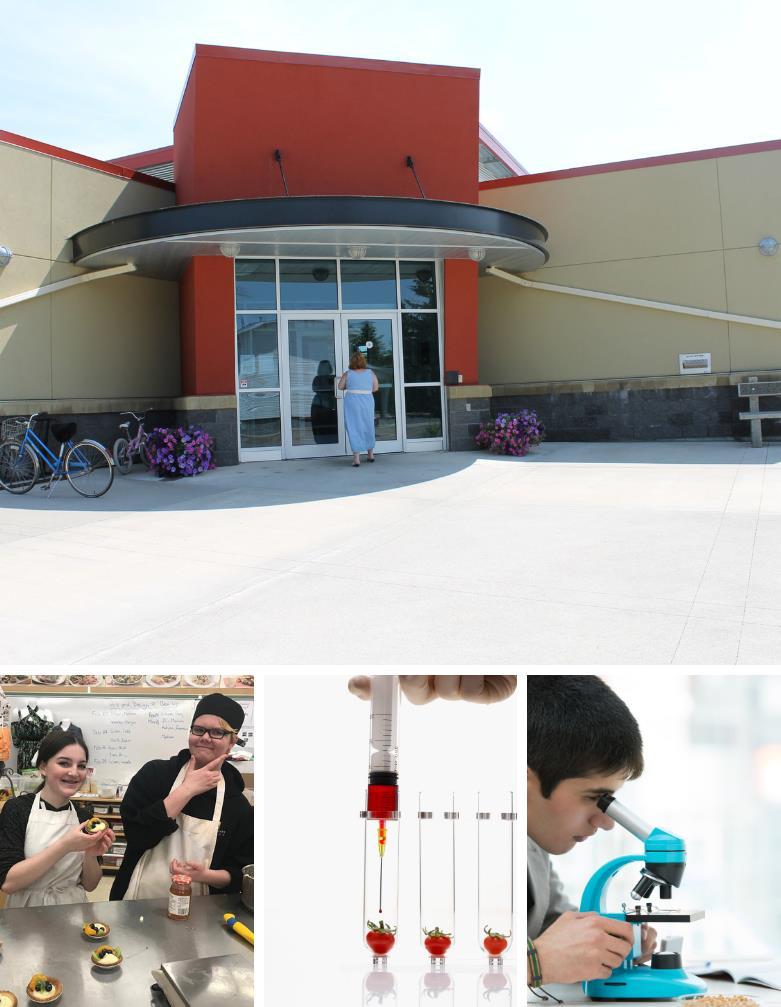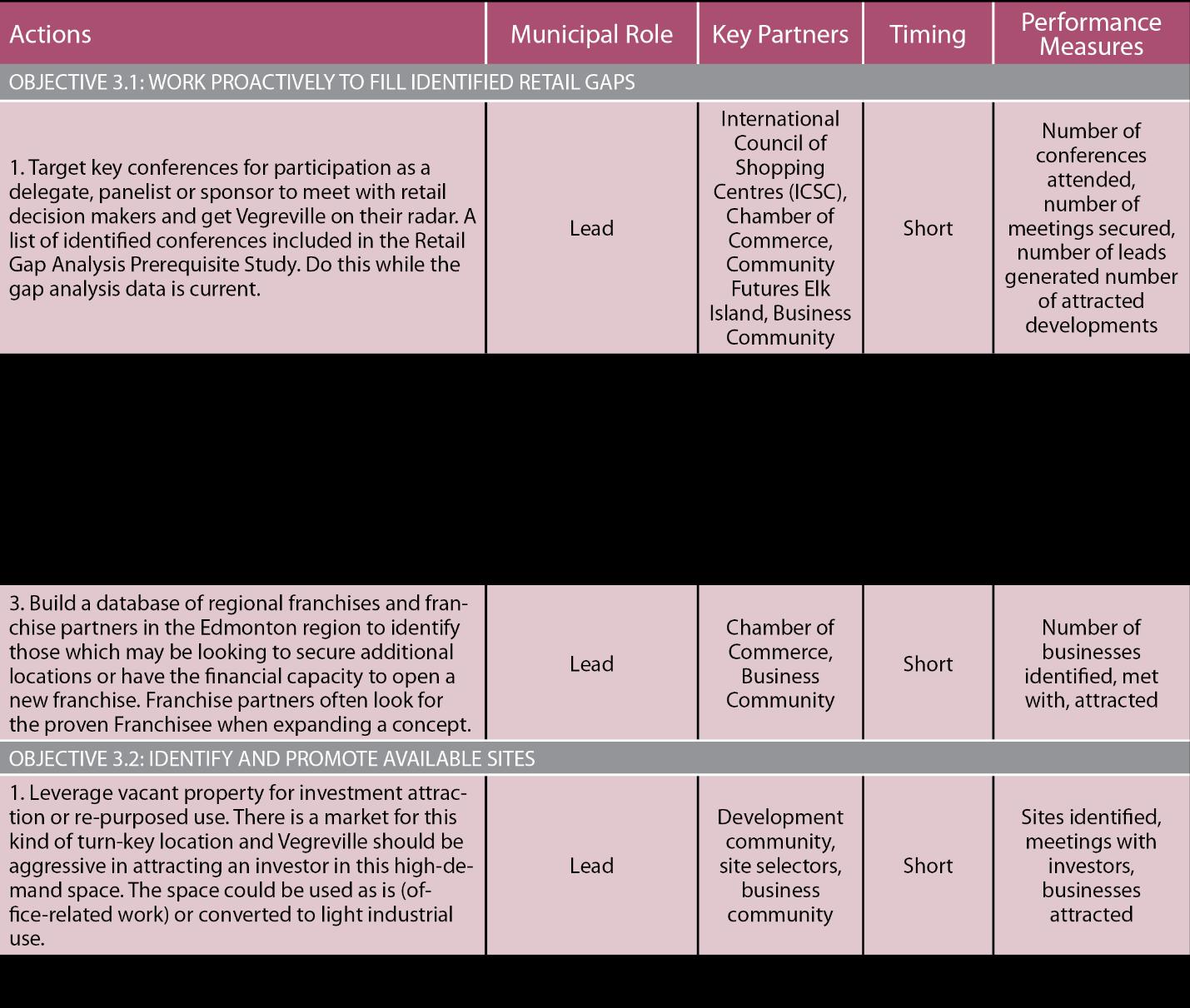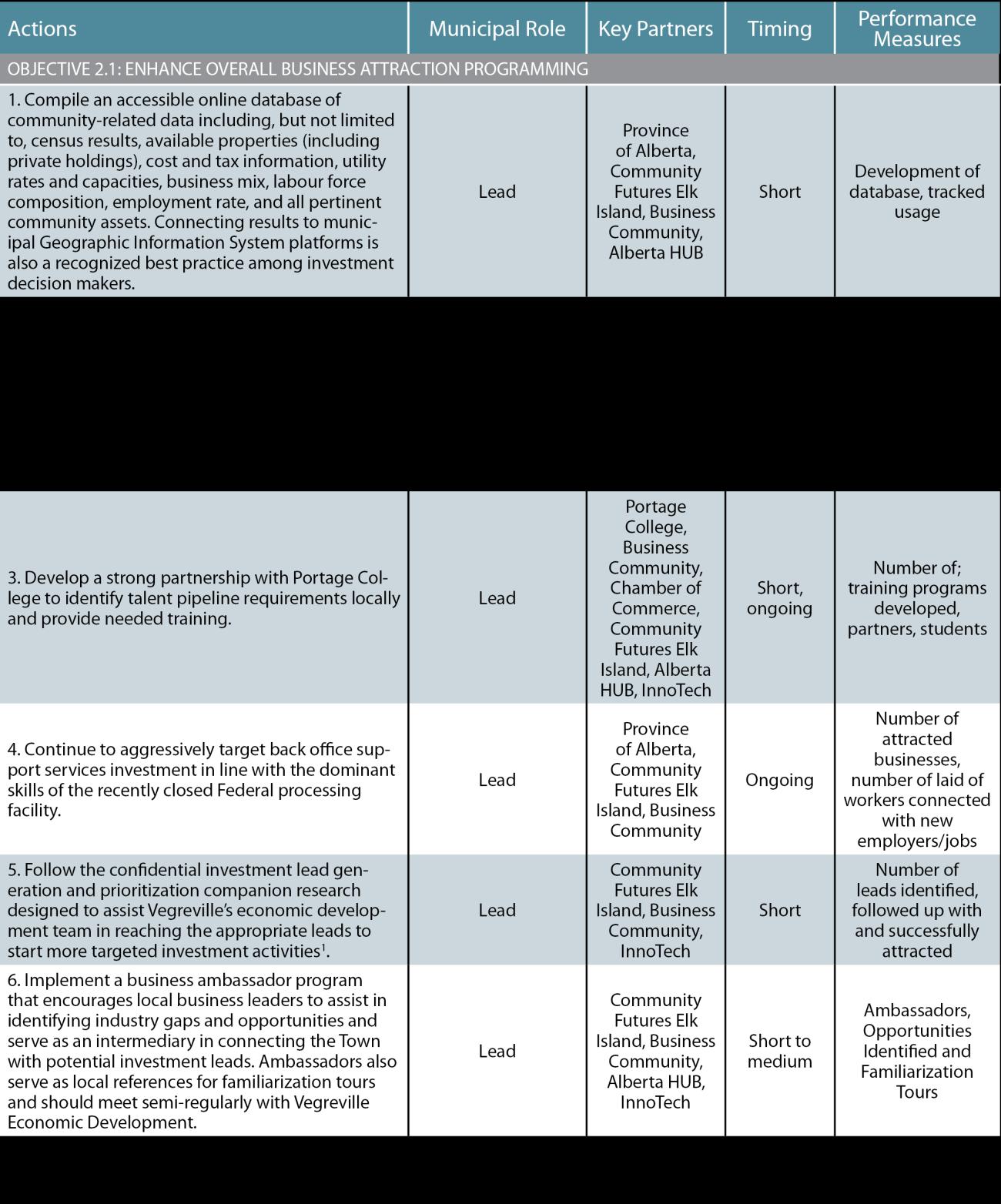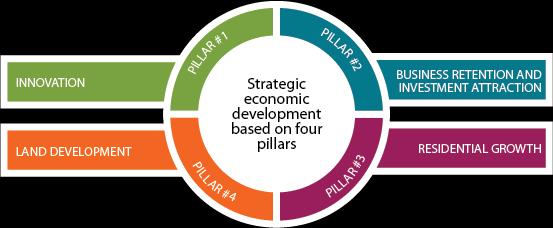
8 minute read
Strengths, Opportunities, Aspirations, Risks & Results
SOARR Assessment
A SOARR Assessment is a forward-looking model, taking elements of what would traditionally be affiliated with a strengths, weaknesses, opportunities, and threats analysis and using insights gained through stakeholder consultations to inform what is desired for the future and how to know when aspirations have been met. It represents a summary of the key learnings that will inform the Economic Diversity Enhancement Plan’s action and implementation plan.
Advertisement
Source: MDB Insight, 2019.
Strengths

Competitive Labour Force Cost –With a median household income that is lowest among regional comparators and the province, Vegreville may be in position to leverage labour force competitiveness. Skilled Trades Population –There is a higher proportion of people with apprenticeship or trades certificate/diploma. Technical Skills –29% of labour force have educations in architecture, engineering, and related technologies with additional strengths in management and science. Serviced Industrial Land –A recently enacted Area Structure Plan for industrial land includes full servicing to 83 acres on the southeast edge of the community. Infrastructure Capacity–The Town has significant water and sanitary sewer capacity and a broadband trunk can be found in the community Transportation –Vegreville is located on the Trans-Canada Highway and Canadian Pacific Railway Portage College and InnoTech Research Centre –Two key assets that can help link entrepreneurship to greater opportunities and ensure a skilled future labour force. Alberta Hub Member –The Alberta Hub helps to collectively draw attention to the region and contains helpful statistics about each member, including Vegreville.
Opportunities

Business Retention and Expansion Priorities –A random business survey identified the following strategic priorities that are most likely to increase business satisfaction: municipal property tax, development/building permit processes, business assistance from the municipality, development charges and off-site levies, and availability of skilled labour. Leverage Portage College –Use Portage College to grow future entrepreneurs and as an audience for targeting future resident attraction among recent graduates.
New Trade Agreements –Recently enacted USMCA and CETA represent new horizons that have not been fully understood by most communities. Those with an expertise in both agreements will see the greatest benefits and opportunities. Oil and Gas-Related Industries –Building on regional strengths in oil and gas, complimentary sectors such as oil and gas by-product manufacturing or chemical production may be possible in the region, as well as support industries for the sector. Agrifood –The nexus between agriculture and food processes or other value-added agricultural product processes (e.g. biomass, oil extraction, etc.). Fibres and Composites –Sectors related to agriculture and forestry can produce different materials useful in composite development, such as hemp fibres, cellulose products, or other agro-forestry byproducts or inputs. Federal Talent –With the closure of a Federal Office that specialized in documentation processing and which employed nearly 200 people locally, there is an opportunity to attract businesses to Vegreville that require similar skills. Increased Self-Employment and Entrepreneurship –Vegreville currently has a low self-employed population. There is room to grow self-employment locally, thereby diversifying the economy and minimizing the risk of large shocks. Space may be required for small-scale industrial companies, such as colocation facilities.
Key Growth Sectors –Sectors demonstrating capacity for growth include agriculture, manufacturing, professional, scientific and technical services, and transportation and warehousing, but areas of overlap hold the most significant opportunities for growth (e.g. manufacturing and agriculture, oil and gas and manufacturing or technical services). Key Areas of Slippage –Business retention efforts can be focused on sectors that are experiencing slippage such as oil and gas extraction, utilities, finance and insurance and real estate and rental and leasing, administrative and support, and waste management and remediation services.
Aspirations

Shift tax assessment burden away from residential contributions, by growing investment in nonresidential sectors.
Diversify the economic base by focusing on business opportunities in ways which diversify the economy and encourage entrepreneurship. Develop high quality intuitive, accessible, complete, and accurate data for investors. Become an international leader in the hemp growing and processing industry.
Attract, develop and promote local lifestyle amenities most likely to appeal to target demographics such as young professionals, independent entrepreneurs, and skilled-labour/trades people. To retain students after they have completed post-secondary education while also building a quality of place that encourages people who have moved away for studies to return later to raise families. To have stronger local business support by residents as well as existing businesses, who may assist in supporting each other and identifying common commercial or supply chain needs which could signal growth opportunities.
Risks

Fluctuations in Energy Prices –The threat of future oil and gas-related recessions could prove to be a source of insecurity among investors, but also demonstrate an opportunity for diversification into cleantech or other sectors of the economy that are more distant from oil and gas. Out-migration –With the closure of a large Federal Government office in Vegreville, the community must fight to retain those residents that have been directly impacted by the closure. Vegreville must anticipate some out-migration (which theoretically would make for a less severe unemployment rate), but develop opportunities for skills upgrading, resident retention, entrepreneurship, and investment attraction associated with dominant skills plus add quality of place amenities that compel residents to remain.
Poor Performance –Low performing base industries such as manufacturing and professional, scientific and technical services hold the potential to limit further growth in other sectors such as retail and personal services.
Results

Assessment ratio tracking. Successful transition of laid-off federal workers.
Ongoing business satisfaction measurement and intervention success rates.
Entrepreneurship support programming provided (workshops, consultations, grant assistance and wins). A roadmap for non-residential land development that coincides with a strategy for long-term competitiveness in development costs and assessment; improved non-residential assessment ratio. Transition and urgency triage programming for recently laid-off federal employees to assist in new career opportunity identification, skills matching, and second career planning. Participation rate, employment rate and unemployment rate tracking. Ongoing business satisfaction monitoring and benchmark comparisons. Number of expansion leads acted upon, and new projects generated from expansion leads; number of business closures or downsizings prevented due to follow-on activities associated with businessretention and expansion servicing. Increased investment lead generation and increased lead-to-conversion ratios. Labour force demand monitoring to understand sector or occupation pipeline needs. Entrepreneurship programming that is robust and helpful (e.g. workshops, consultations, business plan reviewing).
Page Left Blank
[Insert Divider Page Image Here]


The Pillars of this Economic Development Action Plan were identified by the Town of Vegreville as the guiding components of this project. Each is crucial to the success of the plan and requires specific strategic objectives and actions. The pillars are heavily interconnected and build on each other to synergistically support the goals and aspirations of the community as identified in the SOARR assessment.
Pillar 1: Innovation
Innovation is a key pillar that runs through every aspect of the Economic Diversity Enhancement Plan. By choosing to focus on connections between industries, technologies and key strengths, Vegreville commits to supporting diversification and building on existing momentum in the community. Innovation is the state-of-mind of being open to and creating change through new products, ideas and methods. By focusing on the development of a culture of innovation the community is choosing to embrace change and intentionally build the foundation for the future.
PILLAR 1: INNOVATION
Objective 1.1: Support and Grow the Entrepreneur (Start-up) Community Objective 1.2: Develop an Incubator/Co-working Space Objective 1.3: Attract and Enable Remote Entrepreneurs Objective 1.4: Position Vegreville as a Regional Centre for Innovation
Once the community has chosen to embrace an innovative lens on economic development, the focus shifts to core industry practices. Existing businesses are the backbone of Vegreville’s economy, and supporting their success provides the highest return on investment to the community. Creating the conditions that enable local businesses to grow supports local investment while proactively setting the stage for outside investment. Also, by intentionally attracting new investment, Vegreville can diversify and grow the local economy in key sectors, grow the residential workforce and fully leverage community assets.
Objective 2.1: Enhance Overall Business Attraction Programming Objective 2.2: Continue to Implement Business Retention and Expansion Programming and Solutions Identification Objective 2.3: Initiate Proactive Investment Attraction Programming Focused on Key Sectors
Pillar 3: Land Development
Closely related to business retention, expansion and attraction activities, land development is the next key enabler of growth. Perhaps the most significant role that a municipality can play in investment attraction it is one of ensuring institutional processes are streamlined so as to make the process of land selection and acquisition easy for investors. Relatedly, a municipality has a major role in ensuring there is adequate infrastructure and land to satisfy projected demand and that there is an accurate and easy-tosearch inventory of available investment properties.
PILLAR 3: LAND DEVELOPMENT
Objective 3.1: Work Proactively to Fill Retail Gaps Objective 3.2: Identify, Develop and Promote Available Sites Objective 3.3: Develop Sites for Investment
Pillar 4: Residential Growth
The first three pillars have laid the groundwork for what is really the heart of the matter in communities: attracting and supporting the people who live in Vegreville. Without residents, a community is a patch of dirt on the highway. The perception of a community as livable, diverse and inclusive is a vital component ofits ability to attract and retain residents from a wide range of demographic groups. This discussion takes on greater relevance in the battle to attract the workforce required to drive the development of more knowledge-based sectors of an economy (e.g. advanced manufacturing; professional, scientific and technical service firms; and information, culture, and communication technology firms). Attracting creative workers, or the intellectual capital that powers the development of a knowledge-based economy, has become a priority in many areas of Alberta.
PILLAR 4: RESIDENTIAL GROWTH
Objective 4.1: Ensure Vegreville’s Assets are Understood and Promoted Objective 4.2: Enhance Vegreville’s Quality of Place Objective 4.3: Initiate a Resident Attraction Task Force that Engages with and Promotes the Benefits of Living in the Community Objective 4.4: Grow Vegreville’s Population by 20% Over the Next 10 Years






